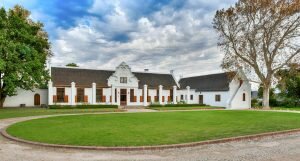The Buyer on the Road: 3 Chianti wineries set to hit UK on-trade
It does not take too much of an incentive to travel to Tuscany over the summer months, but acting on a tip-off from a Master of Wine friend, Geoffrey Dean travels to the region to visit and discover three Chianti producers that he believes are well worth making a note of and even more importantly are targeting expansion in the UK on-trade.
By Geoffrey DeanAugust 25, 2017
Tasting the wines of Viticcio, Castello di Radda and Campriano – three Chianti wineries that are producing fine wines and deserve greater recognition.
Growing demand in the UK on-trade for Chianti could create a window for three producers from Italy’s most celebrated wine region, none of whom are particularly well-known but whose quality and value-for-money are self-evident.
Campriano which distributes through Haynes, Hanson & Clark, Viticcio, and Castello di Radda, which is seeing UK distribution, are looking to increase exports to these shores as The Buyer learnt on a recent visit to the wineries in Tuscany.
Viticcio: good wine for pubs and wine bars and some premium too
Viticcio, which has 30 hectares under vine just outside the delightful little town of Greve, exports the vast majority of its wines, but only 8% of these exports reach the UK, with the US taking as much as 60% through its distribution with ABC Fine Wines. The winery wants to increase the British uptake to 25%, a more than realistic target given the drinkability of the wines.
Daniele Innocenti, winemaker at Viticcio, declares that the wines “are made in the vineyard not cellar.” He prefers to employ low levels of sulphur dioxide (25ml/l of free SO2 for his reds and 35 ml/l for his whites and rosé). Nor does he like to use excessive new oak, in fact he uses none at all for his Chianti Classico, a third for his Chianti Classico Riserva and 50% for his two most expensive wines, the Prunaio Gran Selezione and the Monile, a Bordeaux blend.
Daniele Innocenti
Eighty per cent of Viticcio’s vines are Sangiovese, with the oldest being 35 years and yielding between 40-45 hl/ha. The other varietals are Cabernet Sauvignon, Merlot, Syrah, Pugnitello (an indigenous grape) and Vermentino. The vineyards are situated at around 430m, helping to extend the diurnal range and preserve acidity.
The 2016 Vermentino ‘Greppico’ (sold locally for €8) is great value, being fresh and limey. Picked in the first week of September, it has vibrant acidity with a pH of 3.2 and TA 7g/l. The similarly-priced 2016 Rose ‘Massaia’ (85% Sangiovese and 15% Merlot) spent six hours on the skins and is a lovely easy-drinker. This year Innocenti plans to pick the grapes for it in August to reduce the abv of 14%.
If both those value wines are ideal for pubs and wine bars, so too is the Chianti Classico 2014 (€11), with its very approachable tannins, brisk acidity and decent length. The 2015, tasted from a tank sample, had more overt tannins but is considered by Innocenti as ‘the best vintage of the last 20 years in Chianti Classico.’
In 2013, the Consorzio Vino Chianti Classico added another bracket, Gran Selezione, to the region’s quality pyramid. Produced from a single vineyard or an estate’s best grapes, it must be aged for at 30 months (six months more than the Riserva).
Viticcio’s Prunaio Gran Selezione 2013 (€25) was still quite a young wine but its tannins were starting to mesh quite well. With generous black Sangiovese fruit (blackberry and black cherry), it was complex with impressive concentration and length. The Monile 2011 (80% Cabernet Sauvignon, 20% Merlot) is Toscana IGT and worthy of Super Tuscan status, yet excellent value at €35. Its intensity was notable.
Castello di Rada turning its attentions to premium on-trade
Castello di Radda possesses 36 hectares under vine just outside the delectable village of Radda. These are some of the most picturesque vineyards in Tuscany, and apart from Sangiovese, feature Merlot, Canaiolo and the white grape, Colorino. The wines are only available in the UK in the off-trade at present, but the management is very keen to target the on-trade.
1500 bottles of the Castello di Radda’s Rosato 2016 (12% abv, €9), a typical Chianti rosé, were sent to the UK, and ought to be of interest to the on-trade. The same would apply to the 2014 Chianti Classico (€13) with its red cherries, soft tannins and nice length. The 2015 was bigger and more complex with more appealing fruit. The 2012 Riserva (€23) had gorgeous fruit and excellent length. The 2012 Gran Selezione (€35) was also outstanding, absorbing 80% new oak very easily.
Castello di Radda has been looking to reduce the amount of new oak it uses. Its voluptuous ‘Guss’ 2011 (100% Merlot, only made in the best vintages) was wonderfully rich, round and silky. The 2014 Guss (which saw half a much new oak – 40% – as the 2011) was a different style, being more elegant and not as big. Another cracking wine, it would be ideal for a top-end restaurant.
Campriano exporting a third of its value Chianti to the UK
Ranuccio Neri
Completing a triumvirate of superb Chianti producers which deserve greater recognition is Campriano, south of Siena, near the pretty village of Murlo. Winemaker Ranuccio Neri exports a third of his 30,000 bottles per year to the UK, where it is available through the Wineservice (Surrey) and Haynes, Hanson & Clark.
“English people really appreciate the way we make the wines,” he told me. “They must be light and elegant, and the fruit must be evident, so the cleanness is vital. There must not be too much alcohol, tannins or wood. I use only old oak.” His Chianti Colli Senesi 2014 and his Stile di Campriano Rosso 2015 (Toscana IGT) are both terrific value at €7 and €12 respectively.

























































